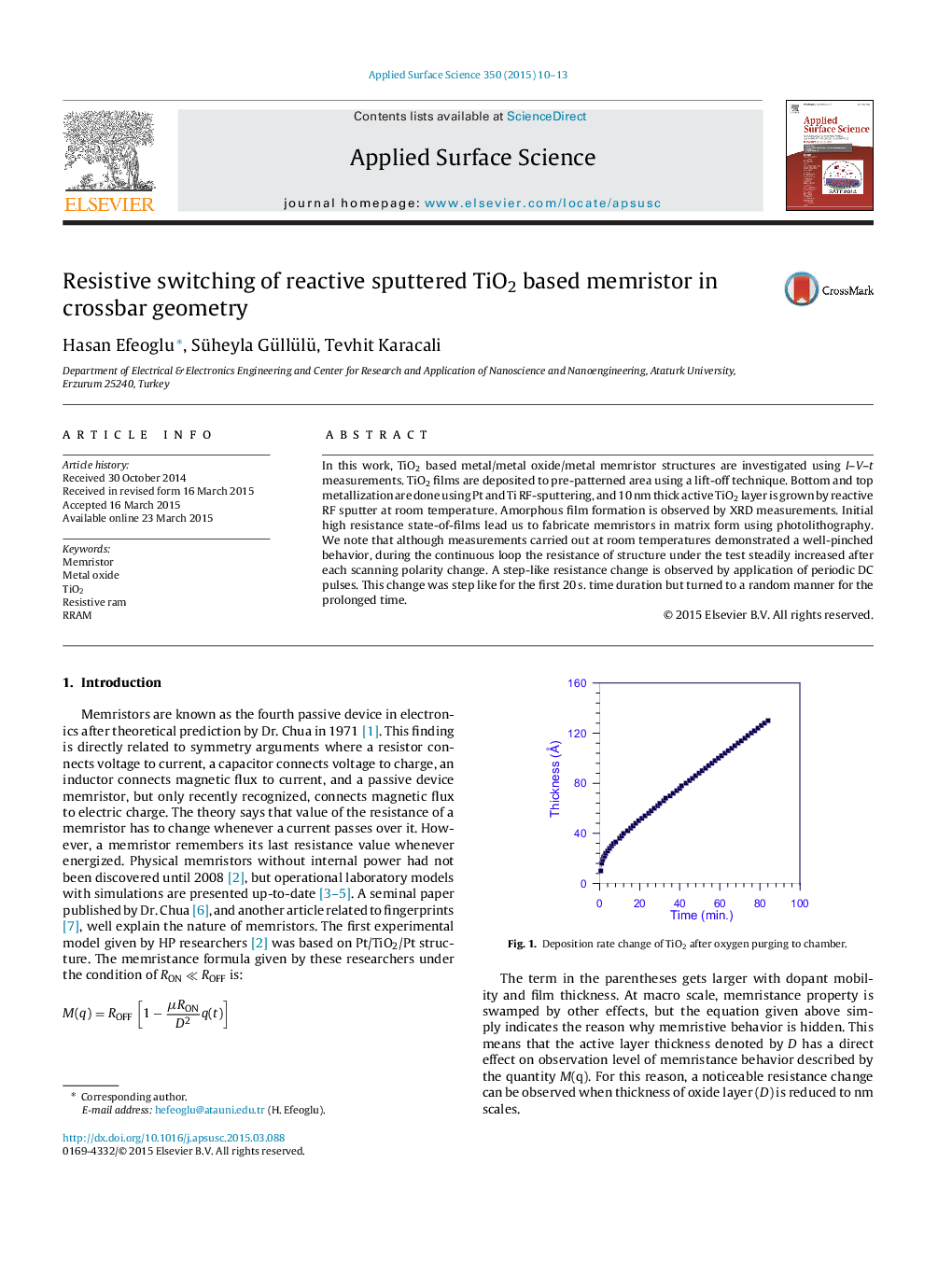| Article ID | Journal | Published Year | Pages | File Type |
|---|---|---|---|---|
| 5349162 | Applied Surface Science | 2015 | 4 Pages |
â¢TiO2 based memristors are fabricated.â¢Fabrication in matrix form requires initial high resistance metal oxide thin film.â¢A step-like resistance change is observed by application of periodic DC pulses.â¢Bias polarity has effect on resistance change.â¢Polarity dependence has a relation with interface charges.
In this work, TiO2 based metal/metal oxide/metal memristor structures are investigated using I-V-t measurements. TiO2 films are deposited to pre-patterned area using a lift-off technique. Bottom and top metallization are done using Pt and Ti RF-sputtering, and 10Â nm thick active TiO2 layer is grown by reactive RF sputter at room temperature. Amorphous film formation is observed by XRD measurements. Initial high resistance state-of-films lead us to fabricate memristors in matrix form using photolithography. We note that although measurements carried out at room temperatures demonstrated a well-pinched behavior, during the continuous loop the resistance of structure under the test steadily increased after each scanning polarity change. A step-like resistance change is observed by application of periodic DC pulses. This change was step like for the first 20Â s. time duration but turned to a random manner for the prolonged time.
Graphical abstractThe fourth passive device memristor is fabricated using Pt/TiO2/Pt/structure on SiO2/Si substrates at room temperature using RF reactive sputter. XRD measurements are confirmed amorph film formation. The I-V-t measurements showed memristive behavior, and step-like resistance is also observed. But polarity-depended transients in resistance steps suggest interface charges are effective.Download full-size image
